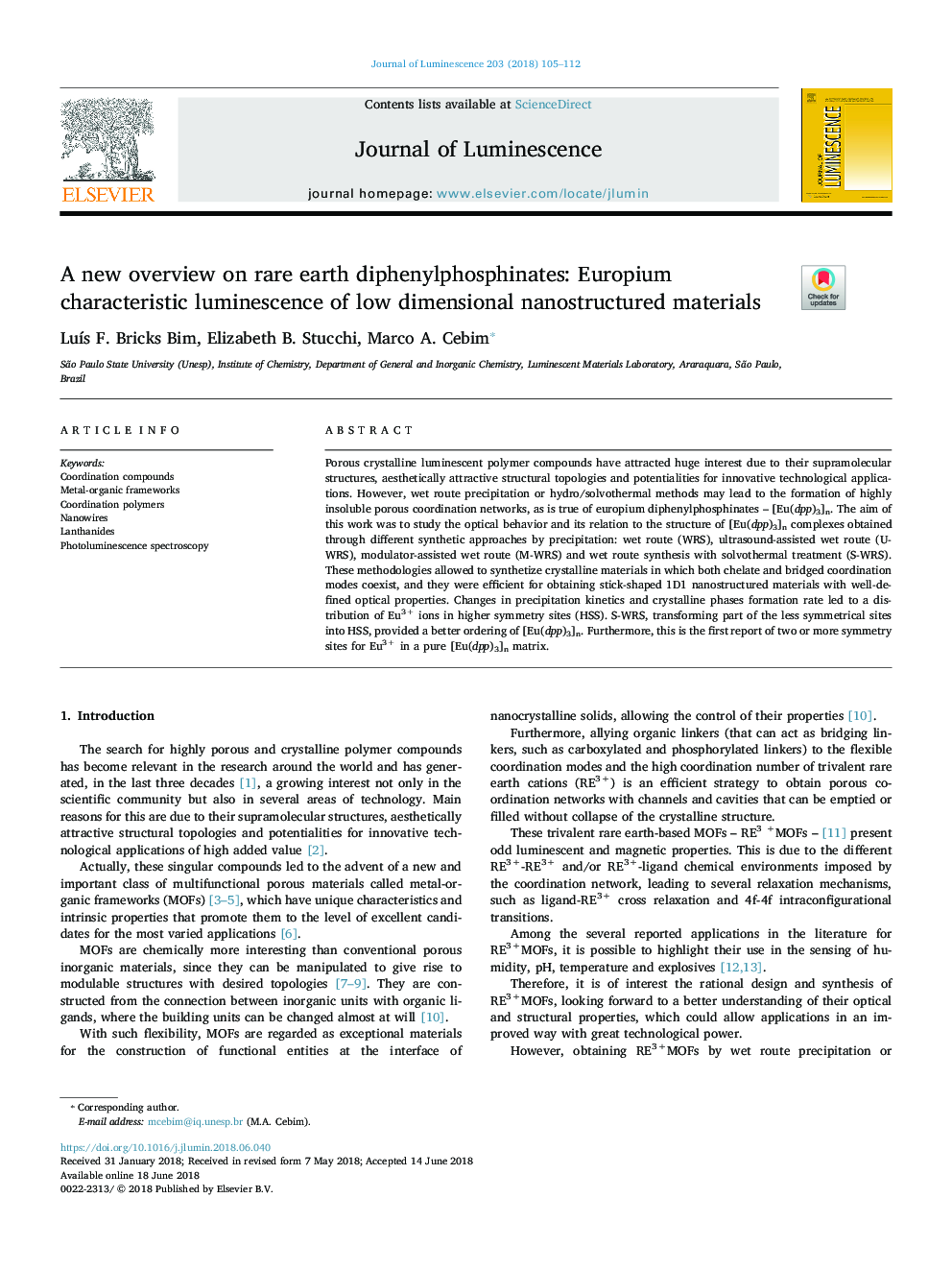| Article ID | Journal | Published Year | Pages | File Type |
|---|---|---|---|---|
| 7839656 | Journal of Luminescence | 2018 | 8 Pages |
Abstract
Porous crystalline luminescent polymer compounds have attracted huge interest due to their supramolecular structures, aesthetically attractive structural topologies and potentialities for innovative technological applications. However, wet route precipitation or hydro/solvothermal methods may lead to the formation of highly insoluble porous coordination networks, as is true of europium diphenylphosphinates - [Eu(dpp)3]n. The aim of this work was to study the optical behavior and its relation to the structure of [Eu(dpp)3]n complexes obtained through different synthetic approaches by precipitation: wet route (WRS), ultrasound-assisted wet route (U-WRS), modulator-assisted wet route (M-WRS) and wet route synthesis with solvothermal treatment (S-WRS). These methodologies allowed to synthetize crystalline materials in which both chelate and bridged coordination modes coexist, and they were efficient for obtaining stick-shaped 1D1 nanostructured materials with well-defined optical properties. Changes in precipitation kinetics and crystalline phases formation rate led to a distribution of Eu3+ ions in higher symmetry sites (HSS). S-WRS, transforming part of the less symmetrical sites into HSS, provided a better ordering of [Eu(dpp)3]n. Furthermore, this is the first report of two or more symmetry sites for Eu3+ in a pure [Eu(dpp)3]n matrix.
Keywords
Related Topics
Physical Sciences and Engineering
Chemistry
Physical and Theoretical Chemistry
Authors
LuÃs F. Bricks Bim, Elizabeth B. Stucchi, Marco A. Cebim,
